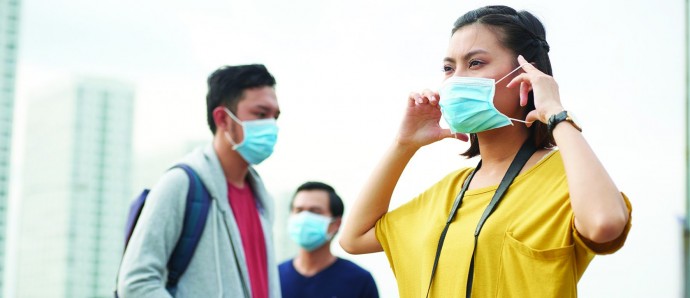Influenza is a highly contagious viral infection that is similar to the common cold. The flu virus affects the respiratory system, i.e. the nose, throat and lungs. Common signs and symptoms include fatigue, body aches and chills, cough, sore throat, fever and gastrointestinal problems.
Who’s at risk?
Influenza can sometimes lead to serious complications such as pneumonia, meningitis/encephalitis, and even muscle inflammation. Young kids face the possibility of complications such as febrile convulsions and inflammation of the middle ear. The highest risk groups include:
- Kids below five years old, especially toddlers below two years old, are vulnerable as their immune system is not fully developed yet. Even during a mild season of flu, up to 7,000 kids are hospitalised and this can rise to 26,000 during an epidemic.
- Pregnant women have been shown to be at increased risk of influenza. A fever can harm the developing foetus, so pregnant women may need to be hospitalised due to the increased risk of complications. Newborns with mothers who had influenza during pregnancy (especially if it was a severe case) face increased risk of adverse outcomes, such as premature birth or low birthweight.
- The immune system weakens with age, thus the elderly (>65 years old) are more susceptible to influenza. In this group, flu related hospitalisation can be as high as 70%, while deaths are estimated at 70-90%.
- Long term residents of student dormitories or nursing homes. Living in close proximity leads to frequent close social interactions (e.g. sharing utensils, straws, cups or glasses, shaking hands, hugging, kissing, and touching contaminated surfaces such as doorknobs or shared gym equipment) that make it easier for the virus to spread.
- Any person, regardless of age, who suffers from chronic health conditions such as asthma, cerebral palsy, seizure disorders, intellectual disabilities, diabetes, heart disease, lung disease, liver disorders, or an immune system weakened due to cancer or HIV/AIDS, etc. Flu can lead to the worsening of those conditions. Extreme obesity also increases one’s risk.
Steps to reduce your flu risk
- Stay vaccinated by getting the annual flu shot.
- Maintain hygiene by washing your hands properly.
- Wear a facemask and keep your distance if you are sick.
- Use tissues to cover a cough/sneeze. If you used your hands, wash or sanitise them immediately.
- Get prompt medical attention if you suspect you have the flu. Don’t wait for complications to develop.
- Wash/sanitise surfaces that are frequently touched.
Preventing influenza
Getting the annual flu vaccine is the most effective method of preventing influenza and its complications. Influenza vaccines are updated annually to target the specific influenza strains that are currently circulating. This is because of changes in circulating strains, mutations in the influenza virus, and waning immunity from earlier vaccinations.
Vaccination also helps protect infants below 6 months old (who are too young for flu vaccinations) via ‘herd immunity’, i.e. when the people around your infant are vaccinated, there is a lower risk of him catching the flu. To learn more about vaccination and other things you can do to minimise the risk of flu, talk to your doctor.
An educational contribution by Malaysian Paediatric Association.






Comments